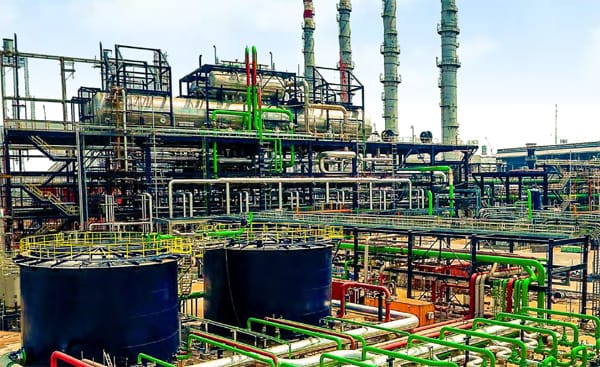Business
Dangote Refinery Awaits Full Operational License, NMDPRA Confirms

The Nigerian Midstream and Downstream Petroleum Regulatory Authority (NMDPRA) confirms that Dangote Refinery has yet to receive its full operational license.
Despite being Africa’s largest refinery, the Dangote Petroleum Refinery has not received a complete operational license as per the Nigerian Midstream and Downstream Petroleum Regulatory Authority (NMDPRA).
In its current state, the refinery with a capacity of 650,000 barrels per day is still in the pre-commissioning phase as disclosed by George Ene-Ita, who serves as Head of Public Affairs for NMDPRA.
Only two of the four top priority sections have been given permission to introduce hydrocarbons as part of a phased process that the refinery is currently undergoing.
This update emphasizes that despite the refinery’s progress, it still needs to fulfill certain regulatory requirements before starting full operations.
Read Also: Fuel Price Hike: Marketers Set Conditions to Purchase Dangote Petrol, Consider Importing
Technically known as priorities one, two, three and four; the plant is divided into four sections in its entirety.
Ene-Ita informed The Guardian that currently, only the top two priorities have been authorized to introduce hydrocarbons during pre-commissioning. This permits the plant to be functional on a trial basis.
According to the NMDPRA, the refinery is authorized only for manufacturing of petroleum-based products such as diesel fuel, kerosene and jet fuel.
Under the regulatory supervision of Nigeria, only approved products are allowed to be released in its market.
Ene-Ita stated that the refinery will go through audits, which will encompass evaluations of its mechanical, electrical as well as instrumentation systems. These steps are necessary to verify if the refinery is geared up for complete production readiness.
Approval for introducing hydrocarbons into priorities three and four is necessary to achieve full production and an increased volume of PMS, he stated.
According to him, “As soon as these parts become functional, the factory will have a 90-day evaluation period in which further tests and audits will be performed to establish compliance with regulatory requirements. If our technical staff confirms that all criteria are met after this time, the refinery’s operational status would receive an official License-to-Operate (LTO).”
Ene-Ita responded to the issues raised about the hue of PMS manufactured during the pre-commissioning stage.
He clarified that the NIS has stipulated Oxblood Red as the designated color for PMS.
He stated that the refinery is currently not functioning at full capacity and mentioned that the hue may deviate from NIS regulations until it reaches optimal operation.
Ene-Ita emphasized that color doesn’t necessarily indicate the quality of a product or comply with any regulatory parameter. However, once the Dangote Refinery is fully operational, it’s expected to produce PMS meeting NIS color specifications.

